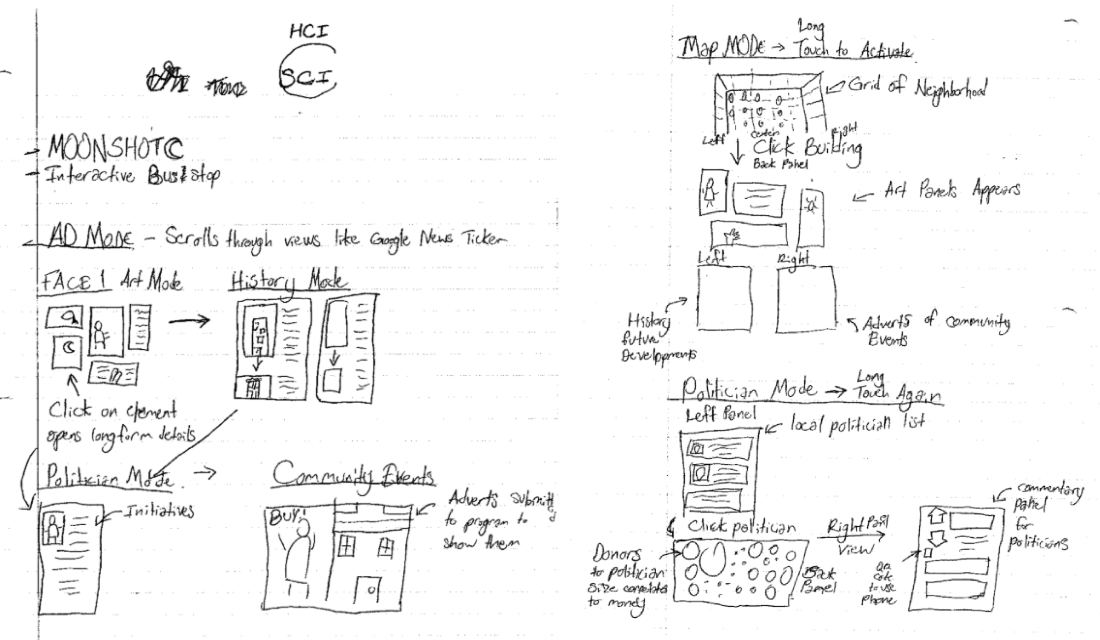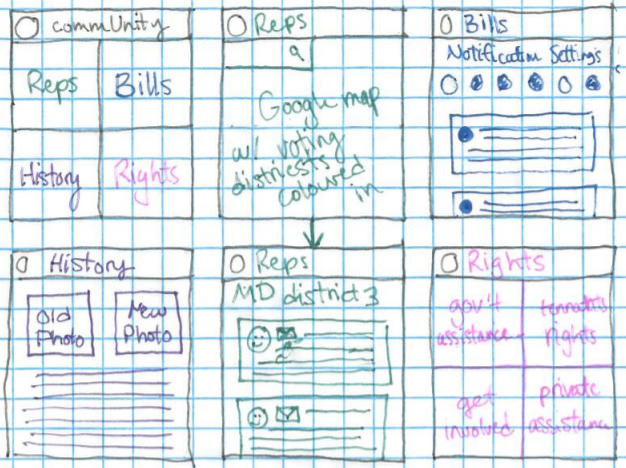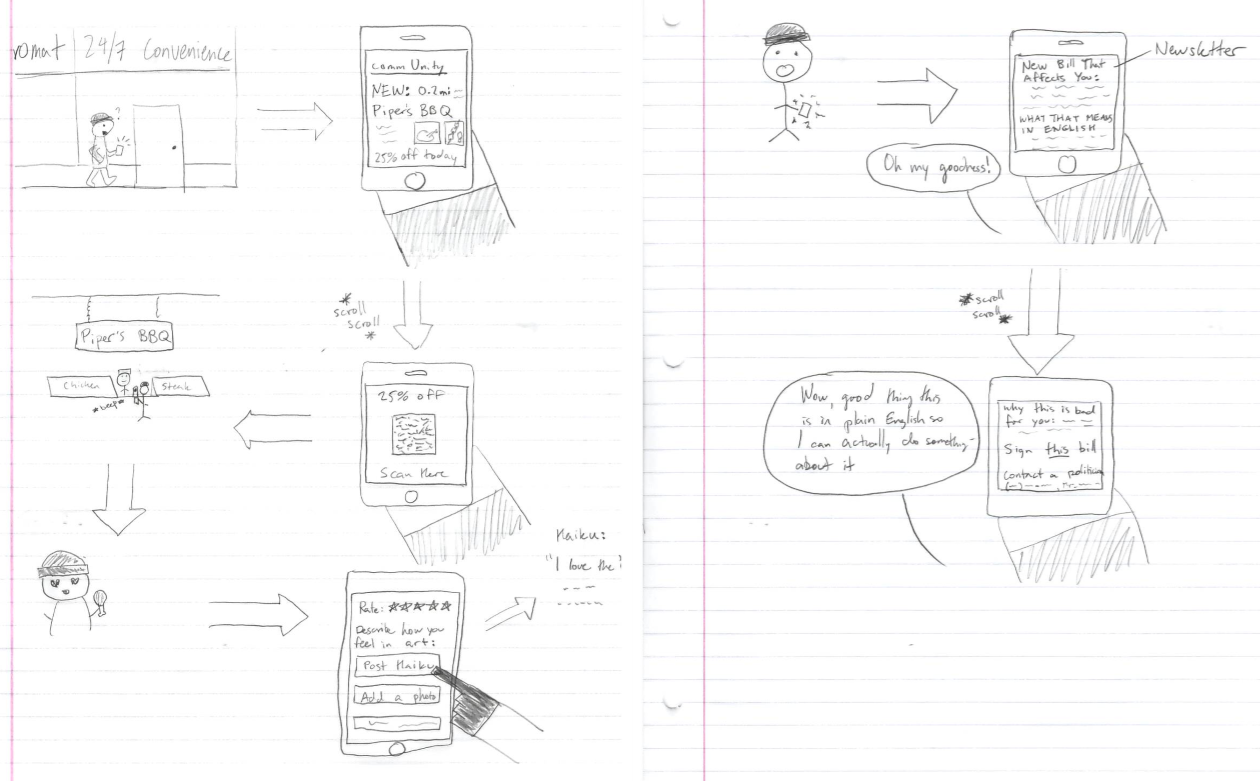Tasks
Connecting people to their local politicians
Businesses notify local residents of community events
Notifying people about when new bills are being considered
Tracking the history/development of buildings
Informing community residents of government programs available in the area
Geotagging art and ideas to local businesses
Initial Designs
commUnity Activism app
This design is a phone app that consolidates all the information a person might need to combat gentrification in their community into a straightforward and user-friendly environment. Users can easily search legislation, local activists, and their resources to help them engage with their community in constructive ways. It can get users in touch with local activists and provide them with the resources necessary to effect their own change in a way that is as unintimidating as possible. It also provides information of tenants’ and small business’ rights in a way that forgoes complicated legal jargon and is generally far more accessible.
Task 1 will involve the user entering their location on a Google map with the voting districts programmed in so the interface can determine who their local and state representatives are. The app will then pull up a page with short blurbs about who their representatives are and how to contact them. Task 3 will allow users to set notifications to appear when certain bills pertaining to gentrification in their area are being considered so that they can contact their representatives to share their opinions. Task 4 will allow users to look up and post information about the histories of their communities and the businesses within them in a format similar to Wikipedia. Task 5 will provide links to a number of relevant services offered in their community including links to pages on their rights as tennants and local business owners.
commUnity Events and News app
This design is a phone app that uses location services to notify users when nearby local businesses host special events. Not only does this bring together the community, but it can also serve as a greater source of income for the local business, as it can bring in above-average amounts of customers. Also, users can post about their experiences while there directly to commUnity, further tying the business to the community. Another feature is constant updates on new bills that affect users, with opportunities to get involved however possible embedded within.
The design is a mobile news and community involvement app that (task 2) notifies people of nearby local businesses offering special deals to community residents. Once people use the QR code to get discounts, they can (task 6) post comments, haikus, or any other art they would like and geotag the business, allowing others to see how much everyone else loves it and how much that business means to them. Users also (task 5) receive newsletter updates, translated into plain English, informing them of new legislation that affects them. At the end of these explanations, there are opportunities for users to (task 1) get in contact directly with politicians and sign petitions if they feel strongly on the matters.
General High-Level-Idea: Seeking out information can be difficult without training of how to search. An interactive bus stop tackles both of these issues. For people living in cities where gentrification take place, the bus tends to be one of the most popular modes of transportation. While a person is on their commute, typically to work, the bus stop will provide them information about their community in a passive way. If they are interested in more information they can click with their finger on almost any element to enter a more detailed view. As bus stops serve such a large swath of the community.
**Note: While generally in this class we are considering ideas that do not have to be one-hundred percent feasible, due to the more intimate nature of this project, it must be noted the idea of a bus stop this high-tech and by extension expensive, in a neighborhood that is being neglected on every human level, is an answer with relatively higher levels of irony than other ideas to accomplish similar tasks.

The interactive bus stop display will show something similar to scrolling ads for tasks 1,2,4, and 6. It will switch between art in the community, news for development plans of the buildings, politicians, and display submitted advertisements for community events sales and alerts that have been submitted, and recent initiatives and bills pushed by local politicians. For those who want to interact with the display they can long-press to switch to a map of their city. They can click on buildings and either view the art or the construction history or plans. They can switch to a view of local politicians where the image-size of their donors correlates to image size, and they can interact through simple upvote/downvote or long-form commentary. The last view available is that of ads that were submitted of events going on within the community.

